Differences in common psychoacoustical tasks by sex, menstrual cycle, and race
- PMID: 29716303
- PMCID: PMC5915329
- DOI: 10.1121/1.5030998
Differences in common psychoacoustical tasks by sex, menstrual cycle, and race
Abstract
The psychoacoustical literature contains multiple reports about small differences in performance depending upon the sex and phase of the menstrual cycle of the subjects. In an attempt to verify these past reports, a large-scale study was implemented. After extensive training, the performance of about 75 listeners was measured on seven common psychoacoustical tasks. For most tasks, the signal was a 3.0-kHz tone. The initial data analyses failed to confirm some past outcomes. Additional analyses, incorporating the limited information available about the racial background of the listeners, did confirm some of the past reports, with the direction and magnitude of the differences often diverging for the White and Non-White listeners. Sex differences and race differences interacted for six of the seven tasks studied. These interactions suggest that racial background needs to be considered when making generalizations about human auditory performance, and when considering failures of reproducibility across studies. Menstrual differences were small, but generally larger for Whites than Non-Whites. Hormonal effects may be responsible for the sex and cycle differences that do exist, and differences in intra-cochlear melanocytes may account for the race differences.
Figures
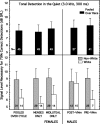
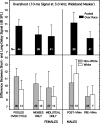

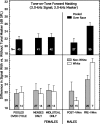
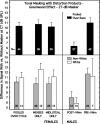
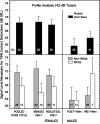
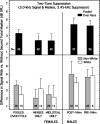
References
-
- Bacon, S. P. (2004). “ Overview of auditory compression,” in Compression: From Cochlea to Cochlear Implants, edited by Bacon S. P., Fay R. R., and Popper A. N. ( Springer, New York: ), pp. 1–17.
-
- Bass, A. H. , Sisneros, J. A. , Popper, A. N. , and Fay, R. R. (eds.) (2016). Hearing and Hormones ( Springer, New York: ), 209 pp.
Publication types
MeSH terms
Grants and funding
LinkOut - more resources
Full Text Sources
Other Literature Sources
Miscellaneous

